

It’s 1346, and a killer is stalking European cities. Soon, bodies will be dropping dead, towns will be wiped out, infected rats will be taking over cities, and worldwide panic and insanity will settle in. Through much of its history, the Afro-Eurasian world had been struck with fatal pandemics before. Some epidemics would affect certain parts of the world, others would engulf the world in their deadly desires. The Bubonic Plague, also known as the Black Death, is arguably the most fatal pandemic the Eurasian world has ever witnessed. The people of Europe were not prepared to combat such a deadly disease, and would not be able to fight adequately against its unknown powers.
The Black Death spread through Europe like wildfire. It started during the winter of 1346, when a Mongolian army prepared to capture the town of Kaffa, located between the borders of Europe and Asia right on the edge of the Black Sea. Kaffa was known as one of Europe’s greatest trading centers, which would become an important catch for the Mongolian empire if captured. The Mongol army was infected by the Black Death, and they began rapidly dying on their expedition to the city of Kaffa. Thousands of Tartar Mongolians were dying daily, rapidly decreasing the Mongolian leader’s options on how they would capture the city of Kaffa. Regardless of any medical attention, once the disease was visible to its victim, it was an automatic death sentence. Though the Mongol leader had lost his troops to the Black Death, he was not going to waste the time or his troops on an attempt to storm the city. Instead, the Mongol leader took their giant catapults and launched their infected corpses over the walls and into the city of Kaffa. Once the corpses were in the town, people in the town of Kaffa started to die, and those that were still alive were desperate to survive this new sickness, and they began fleeing the town. People boarded ships and sailed southward into the Black Sea.1 Unfortunately, it was too late; their bodies had already been infected with the disease—and thus the spread of the Black Death in Europe began.
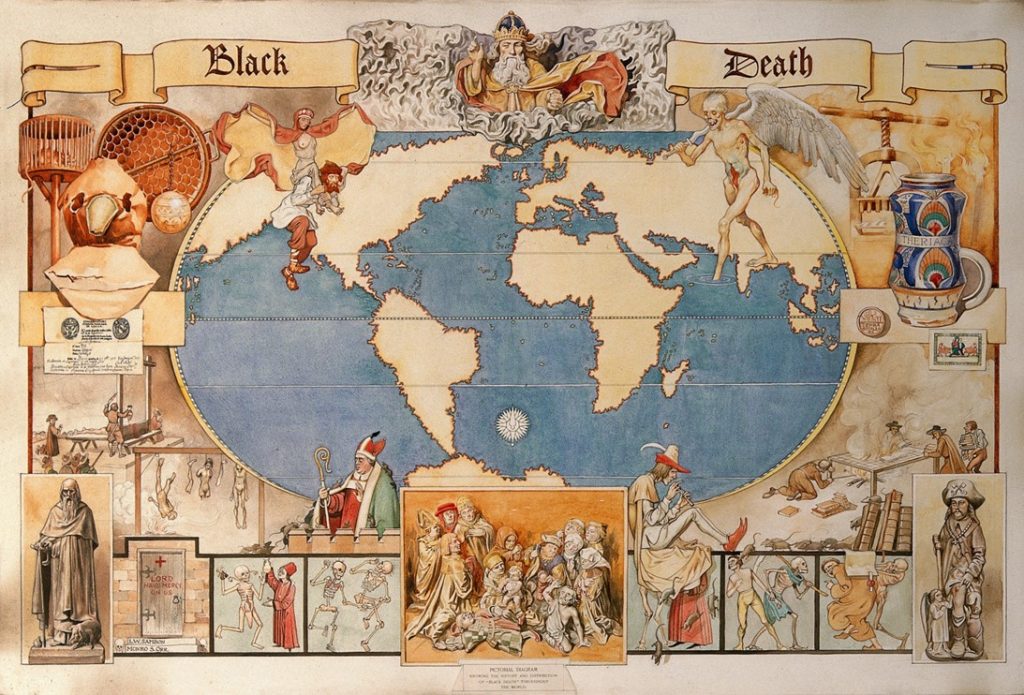
Those who fled Kaffa first brought the disease to Constantinople, and by 1347, the disease had reached the level of an epidemic. Constantinople was a prime trading hub for people all over Europe and Asia. Traders would come to Constantinople to sell their goods in the Byzantine city. Therefore, once the traders were done selling their goods and were ready to leave, their ships had already been infected by the disease that had hit Constantinople. But the traders left the city on their ships, unknowingly infected and carrying the disease even further into Europe. The ships leaving Constantinople contributed to the spread of the Black Death southward into the lands of the Mediterranean. The Black Death hit the port cities in Palestine, in Egypt, in Greece, in Italy, and also in North Africa.2
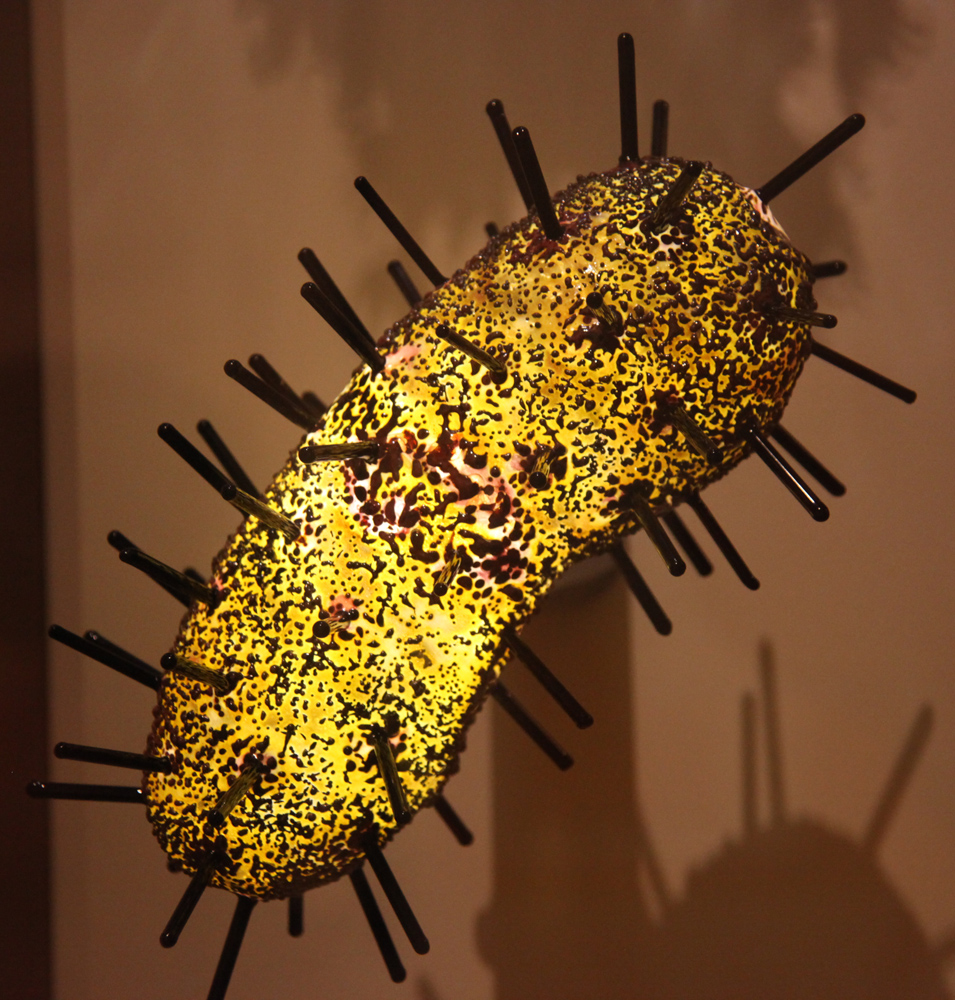
This Black Death was a disease unlike any other, one that was so unknown, that nobody knew how to handle it. Europeans were ill-prepared to combat what this disease would do to its victims. The Black Death spread through contact, much like most diseases. When it came to exposure to this bacteria—Yersinia pestis—it’s said that the easiest way for this disease to spread was through the skin. An open wound, a bug bite, a scratch, cracks in the skin was all it took for this bacteria to enter the body. It was carried by different parasites such as lice, fleas, ants, and other bugs, much of these found on rats and other vermin. The bacteria could be transmitted either from the parasite bite itself or even from the scratching of a bite, leaving an open wound for transmission. Once someone had become exposed, they would enter the incubation period. The average incubation period ranged from three to five days. Although that was the average, there were also cases where signs of the disease would show after 36 hours, while others wouldn’t show symptoms until fourteen days after exposure. This made it difficult to find a true minimum and maximum number of days for the incubation period.3 The symptoms of this virus were painful and deadly. After roughly three days after being exposed, a smooth yet painful lymph gland swelling known as a bubo would start to appear. These buboes were typically found in the groin area, armpits, and neck. In some cases, victims of the Black Death could potentially feel pain in those areas even before the bubo had become visible. Other symptoms included but were not limited to high fevers, muscle aches, vomiting, seizures, prostration (or weakness), chills, and headaches. Needless to say, it was a very excruciating way to die.4 The Black Death not only had effects on one’s body, but also affected Europeans socially. Since it was such a fatal disease, mass hysteria kicked in and everyone was living in terror. People began to disregard the rules because they saw no point in following them anymore if they were going to die. Brothers began abandoning their brothers, parents started to neglect their children, and everyone was made to fend for their own.5
Now that the Plague stalking Europe had spread through its ports, it began to spread even more. By 1348, the plague reached the French city of Avignon. At the time, the city of Avignon was the headquarters of the Catholic Church and of Pope Clement VI. The plague hitting the French city of Avignon would start to affect religious affiliations. Because of how deadly this plague proved to be, priests began fleeing their town in the hope of escaping this killer. Unfortunately, this caused people to start questioning priests and their loyalty to their religious work. It was then that even religion began getting affected by the Black Plague.6 This plague truly put some religions to the test.
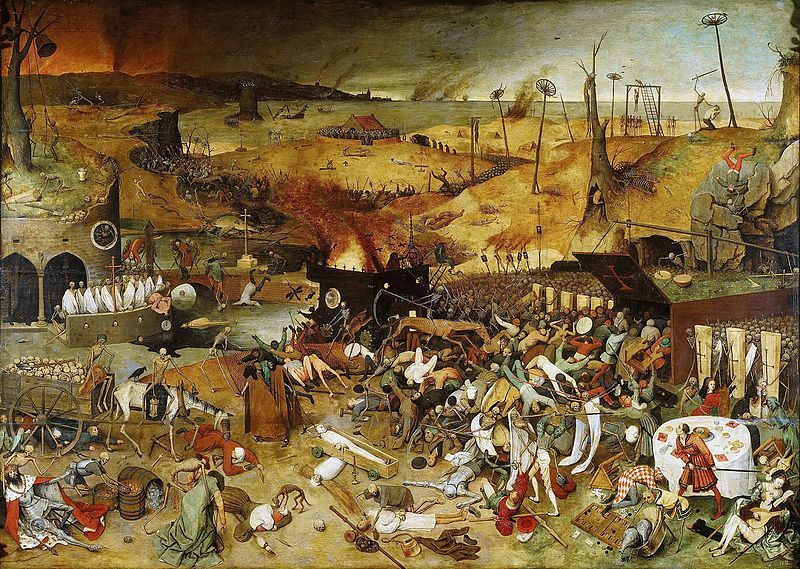
Europeans were looking for someone to blame, and unfortunately, their fingers pointed to the Jews. Jews were accused of poisoning wells, foods, and streams. Because everyone was living in hysteria, many people believed that Jews were to blame for the deaths, and they began torturing Jews to death, often by burning them to death.7 People felt that Jews should suffer and die in a way that would be painful, yet also cleansing of the plague, which explains why burning became a way of torture. Not only did the Black Plague affect the Jews, but it also began to affect Christians, who would start forming ideas for why this plague began in the first place. Many believed that the plague was the righteous judgment of God because of how sinful humanity was. While it was very seldom, there were still people that had hope that through prayers and processions, God’s vengeance of the plague could be resolved. The plague also began causing problems for the Church. There were fewer and fewer priests who were able and willing to hold parish services, so this made it difficult to keep the religious services running.8
Many cities that had become infected with the plague were living with the dead piling up. The corpses of those who lost their lives to the plague were lying around creating piles of the dead, practically taking over the city. The problem with this was that the corpses needed to be removed and buried, but because of how infectious this plague seemed to be, nobody wanted to do the tasks of touching any of the corpses. This meant that this dirty work was mainly reserved for low-class thugs and criminals. Not only were societies struggling to figure out who was going to bury the bodies, but they also struggled with where the bodies were going to be buried. European Christians expected to be properly buried, preferably on the sacred ground by a church. But because of how many people were dying and how fast they were dying, burial options became slim to none. The Renaissance writer Giovanni Boccaccio wrote,
“There was not enough concentrated (sacred) ground to bury the great multitude of corpses arriving at every church every day and almost every hour… So, when all the graves were occupied, very deep pits were dug in the churchyard, into which the new arrivals were put in the hundred. As they were stowed there, one on top of another, like merchandise in the hold of a ship, each layer was covered with a little earth, until the pit was full.”9
Due to the lack of space for graves and the belief that fire would cleanse infection, some communities turned to cremation of the bodies, which wasn’t a typical way of burial at the time. Needless to say, the Black Death affected people physically, mentally, and spiritually.
France had been completely overrun by the Black Death, and it wound up reaching the banks of the English Channel. There was hope that the infection would stop there, due to the massive waterway separating England from the continent. Unfortunately, this was not the case. As mentioned before, not only could people spread the disease, but rats and other vermin could too. So, from one rat-infested town to another, the rats made their way onto trading vessels headed to the lands of England, Germany, Poland, and Russia, which wound up devasting Moscow by 1352. This stalker of death was on a killing rampage that seemed impossible to stop, no matter what attempts were being made.10
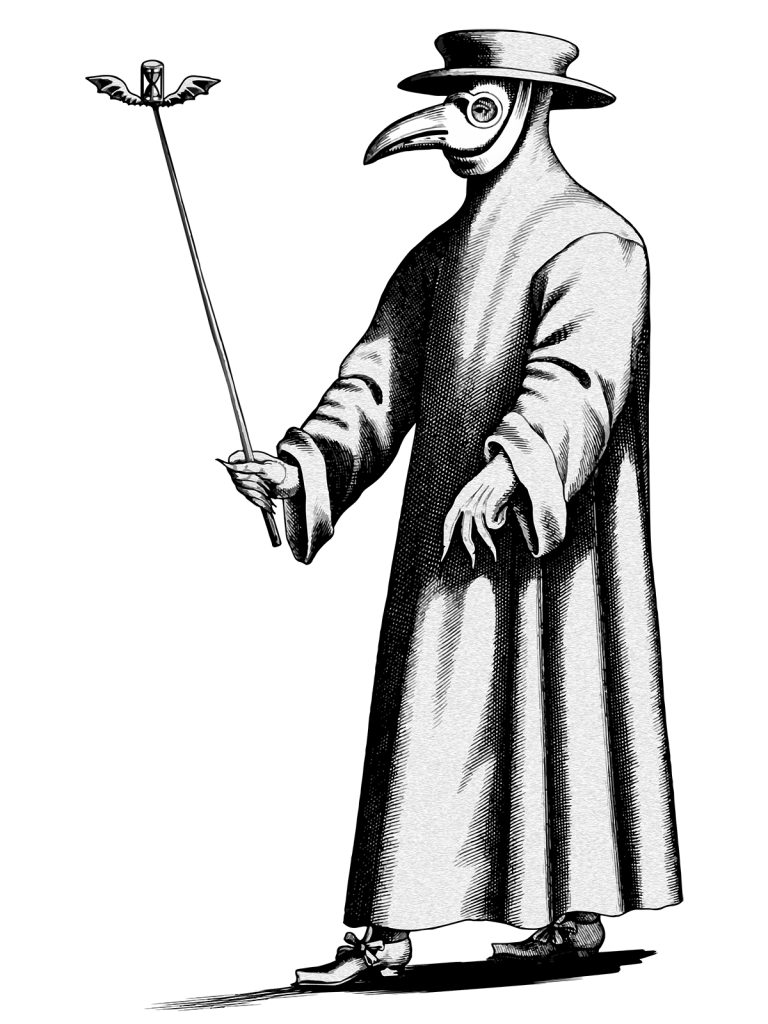
How did Europeans attempt to stop the plague from spreading? Many of us have seen the sinister costume that was worn during this time, but don’t know the reasonings behind it. The costume would be known as Doctor of the Plague. It consisted of a beaked white mask, a black hat, and a waxed gown.11 A royal physician, Charles de L’Orme, described the costumes as such:
“The nose is half a foot long, shaped like a beak, filled with perfume with only two holes, one on each side near the nostrils, but that can suffice to breathe and carry along with the air breathes the impression of the herbs enclosed further along in the beak. Under the waxed coat, we wear boots made in Moroccan leather from the front of the breech’s smooth skin, the bottom of which is tucked into the breeches. The hat and gloves are also made of the same skin…with spectacles over the eyes.”12
At the time, it was thought that different herbs and perfumes could cleanse and/or purify the air, which is why the beak of the mask was filled with up to sixty ingredients. Some of these ingredients included honey, cinnamon, agarics, ground mummia, opium, and desiccated viper. The goggles were used to help apply leeches to the buboes to try to suck out the infection. Finally, the wooden cane was used to help remove patients’ clothes, record their pulse, and keep themselves at a safe distance.13 Regardless of doctors’ best efforts, essentially nothing stopped people from dying of this disease, and many of the doctors fled during the plague hoping to save themselves.14 Through a lot of trial and error, even with most doctors’ best interests at heart, very few would find a way to combat the disease. One of the most famous doctors in Italy at the time, Gentile da Foligno, wrote about what he thought was a defense against the Black Plague. For one, people should be very aware of what they are consuming in terms of food. Fish should be avoided, as well as lettuce if it had been left out in the cold. It seemed imperative to eat good meat such as chicken, gelded cows, and lactating goats. Second, people should take prescription medicine that would help purge and cleanse the body. Third, roughly two or three times a week, people were recommended to indulge in theriac—a paste made as an antidote to poison. Finally, it was highly stressed that people create large fires within their homes in an attempt to keep the infected vermin away.15 Many doctors would do all that they could to try and put the Black Death to an end.
Regardless of everyone’s best efforts to stop that plague, it would not end with a happy ending. The Black Death wound up killing between 100-200 million people, which was roughly 60% of the population of Europe at the time.16 While the first wave of the plague would come to an end in 1351, the nightmare of the second plague returned in 1361 and would, unfortunately, bring a cycle of terror to Europe once again.17
Throughout this writing process, there are many individuals to whom I’ve come to owe the utmost respect and gratitude. First, I would like to thank Jose Chaman for his guidance in helping me choose my topic and prepare my project proposal. Second, I would like to thank my colleagues at The Learning Center, who continuously encouraged me while writing my article. Third, I owe the utmost gratitude to Dr. Whitener for giving me this opportunity to display my work publicly and for providing me with much-needed revisions that have helped strengthen my writing skills. Finally, I’d like to thank my parents for providing me with a great support system and the confidence I needed to complete my writing.
- Emily Mahoney, The Black Death: Bubonic Plague Attacks Europe (New York, NY : Greenhaven Publishing LLC, 2016), 17. ↵
- Emily Mahoney, The Black Death: Bubonic Plague Attacks Europe (New York, NY : Greenhaven Publishing LLC, 2016), 18-19. ↵
- James Cantlie, “The Signs and Symptoms of Bubonic, Pneumonic, and Septicæmic Plague,” Br Med J 2, no. 2078 (October 27, 1900): 1229–32. ↵
- Stephanie Eckenrode, “Bubonic Plague,” Salem Press Encyclopedia of Health, 2021. ↵
- Emily Mahoney, The Black Death: Bubonic Plague Attacks Europe (New York, NY : Greenhaven Publishing LLC, 2016), 71-72. ↵
- Emily Mahoney, The Black Death: Bubonic Plague Attacks Europe (New York, NY : Greenhaven Publishing LLC, 2016) 25-26. ↵
- S. K. Cohn, “The Black Death and the Burning of Jews,” Past & Present 196, no. 1 (August 1, 2007): 4. ↵
- John Aberth, The Black Death: The Great Mortality of 1348-1350, Second, The Bedford Series in History and Culture (Bedford Books, 2005), 79. ↵
- Emily Mahoney, The Black Death: Bubonic Plague Attacks Europe (New York, NY : Greenhaven Publishing LLC, 2016), 22. ↵
- Emily Mahoney, The Black Death: Bubonic Plague Attacks Europe (New York, NY : Greenhaven Publishing LLC, 2016), 24. ↵
- Christian J. Mussap, “The Plague Doctor of Venice,” Internal Medicine Journal 49, no. 5 (2019), 1. ↵
- Christian J. Mussap, “The Plague Doctor of Venice,” Internal Medicine Journal 49, no. 5 (2019), 2-3. ↵
- Christian J. Mussap, “The Plague Doctor of Venice,” Internal Medicine Journal 49, no. 5 (2019), 3. ↵
- Emily Mahoney, The Black Death: Bubonic Plague Attacks Europe (New York, NY : Greenhaven Publishing LLC, 2016), 33. ↵
- John Aberth, The Black Death: The Great Mortality of 1348-1350, Second, The Bedford Series in History and Culture (Bedford Books, 2005), 49-51. ↵
- Christian J. Mussap, “The Plague Doctor of Venice,” Internal Medicine Journal 49, no. 5 (2019), 2. ↵
- Emily Mahoney, The Black Death: Bubonic Plague Attacks Europe (New York, NY : Greenhaven Publishing LLC, 2016), 86-87. ↵
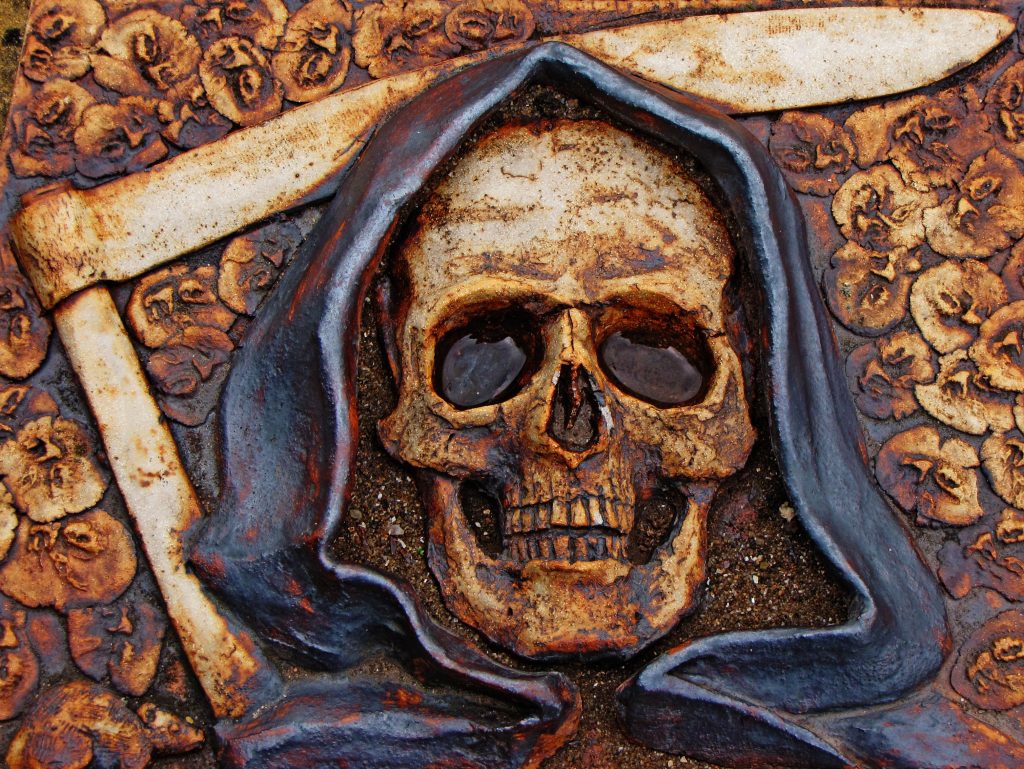


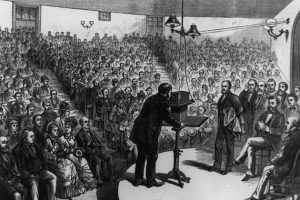
62 comments
Adrian Luis Cano
I really enjoy your descriptiveness of the Black Plague being almost villainous throughout the article. The pictures gave me a clear understanding of how the virus interacted with the population. Its interesting to compare differences between the mass hysteria of the past versus how the people of today would react to a disease. It was a well written and informative article that gave me a deep insight to the past.
Jay Alvarado
Thank you for creating such a fascinating and educational article that describes the impacts the Bubonic plague had on the acts of war, people, customs, religions, social mores, and cultures of Eurasia and Europe. I knew rodents spread the plague, but I had no idea Mongol army leaders used germ warfare as a weapon by flinging infected corpses over the walls at Kaffa, leading to the spread of the Black Death into Europe. I liked reading the article and look forward to enjoying more of your published research in the future.
Robert Miller
I really like how you started the article by referring to the plague as a “serial killer”. It really set the morbid tone of your description of a horrible period of time. This article is very well written and your ability to really dig in and conduct in-depth research is quite evident. I look forward to reading more publications written by you!
Vincent R.
Such a fascinating report on the Black Death. Short, sweet, and packed with useful information. I never knew the true reasoning behind the iconic beak, goggles, and leather, and to the extent doctors went to prevent further death. I definitely will be looking into how the second wave affected Europe.
Alexandra Camarena
This article was written very well. I had always heard of the stories of the black plague and how it killed so many, but I really hadn’t ever looked into it. Reading that it began to spread because they catapulted bodies over was just very sad. I believe the author did a very good job of taking the reader on a journey to allow them to better understand what was happening at the time.
Seth Roen
It is almost like the War of the Worlds, but instead of affecting aliens, it attacked us and was winning for centuries. But is interesting that it the Black Death started as one of the first biological weapons that was used in war. That one disccesion, unleashed one on of the deadiest disease that we have yet seen, still around to this day.
Abigail Delarosa
This is such an interesting topic. I remember learning about the Black Death and it is crazy how many people it killed. It wiped out so many tribes and I enjoyed how well you brought this story to life. Your story line flowed very well and I never lost interest. Great use of sources it was a well written article.
Veronica
Great research and very well written by Emily.
Vanessa Fabila-Ramirez
Great article! The Plague has always been fascinating to me. It’s crazy to know that the Black Plague was real. You hear story’s about it but never been through it. Its just like how COVID was but we have more technology than we did back then. The plague killed so many people and it finally stopped was the best part. Then it come back again for all those who lived in Europe were scared for their lives.
Kenneth Cruz
This is a very well written article, Emily. I like how well you started the story and gave some insight as to how the plague affected large cities. I also like how you included some scientific facts about the plague. As someone that studies science and medicine, I found that part of your article very informative. This truly was a devastating plague that took Europe by storm.